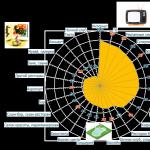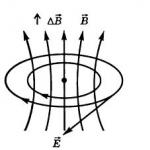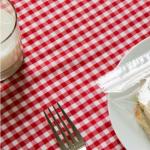Making a wall panel with your own hands is a great opportunity not only to make a beautiful original decoration for an apartment, but also to add an element of homely warmth and individuality to the decor. This decorative element is also used by designers to mask defects and uneven surfaces, protect the coating from dirt, and also for visual magnification space. In order to make a panel from scrap materials with your own hands, you can use fabrics, leather, paper, photographs, threads, beads, bottle caps, mosaics, glass fragments, cereals, shells, stones and much more. In this article we will look at some original ideas production of similar decor with the provision of their photos. Get inspired with us and feel free to take on the decor of your home.




DIY shell panel
When relaxing on the seashore, children love to collect various shells scattered on the coast. But when they come home, they often simply don’t know what to do with them and how to use them. Placed in small bags, shells and beautiful stones only replenish the contents of cabinets and shelves, where they remain for many years. But they can be an excellent material for creating panels on the wall with your own hands. Great variety their shapes and colors will help you create excellent compositions that will decorate any room, especially if the interior is decorated in a marine style.




Preparing to create a wall panel with your own hands from shells
A panel of shells will require the following details: shells, a frame (you can use a photo frame, board or plywood), glue, acrylic paints (stain, nail polish). You will also need background material - fabric, burlap, mesh or sand. Depending on the sketch, there may also be additional elements- beads, buttons, stones, rhinestones, etc.
First of all, the shells must be processed - washed, dried and sorted by type and size. In order to give them brightness, while maintaining the same color, they can be covered with stain or clear nail polish. Some DIY panel drawings will require different colors. In this case, the shells can be painted with acrylic paints, or a solution of potassium permanganate can be used as such. The frame can also be treated, for example, painted blue or white.
Various types of shells can be randomly arranged on a plane, which will look quite attractive, as shown in the photo. Or you can create various panel designs with your own hands, for example, a seascape, a ship, a doll, flowers, etc. In this case, you will need to make a preliminary sketch, onto which you will then apply the prepared material.



DIY shell wall panel for beginners: photos and basic manufacturing processes
Let's start with the most simple models that even a child can do. For example, a chaotic drawing. To do this, you must first apply background fabric or sand to the base using glue and assemble the frame. The background can be painted in any color suitable color before gluing materials. Some paintings suggest monotony. In this case, the entire finished composition is painted. Now we begin to glue a variety of shells. Additionally, you can decorate empty spaces with beads, threads and other available materials.




The panel made of shells in the form looks quite beautiful (and we can see it in the photo). seascape. It’s not difficult to create a picture like this, and it will remind you of have a good rest by the sea.




Sophisticated options for do-it-yourself wall panels made from shells
Panels, like art paintings, can have a variety of subjects. For example, a panel of shells can depict lush bouquet, which, as can be seen in the photo, will look very realistic and three-dimensional. To do this, it is better to give the shells different shades using paints. Initially, shells of suitable size are selected, from which the buds are formed, and then the centers. You can use thick thread or rows of beads as stems.



Sea pebbles can transform such a picture in the most successful way. In the photo we see how elegant the panel made of shells and stones looks.
If you want to depict any animal in a picture or create a portrait, you need to take care of a sufficient number of shells of the same size. Below are examples of such work.


DIY wall panel made from coffee beans
A panel made of coffee beans will perfectly decorate the kitchen interior, adding an appropriate decorative element. Such paintings can be decorated for other rooms by choosing the appropriate design. These can be images of various cute animals for a children's room, beautiful hearts for bedrooms, etc. In order to make a panel from coffee beans with your own hands, you will naturally need coffee beans, glue (PVA, “Moment” or, the most convenient, glue gun), a base in the form of plywood, a board or a photo frame, as well as additional elements: fabric for the background, felt rope, burlap, scissors and a pencil for creating a sketch.







Some craftsmen manage to create entire portraits and paintings from coffee beans, but such work requires some skills, so you should start with simpler pictures.
DIY panel made from buttons
Many housewives probably have entire boxes with various buttons left over from worn items. They can lie there for years without finding a use, like unnecessary trash that is a pity to throw away. But with a little imagination and creativity, you can make a beautiful wall panel out of them with your own hands. For example, using the least popular, green and brown buttons various shades, you can create a wonderful “money” tree, as shown in the photo. At the same time, from available materials, only a board, glue and a pencil are needed to sketch the sketch. All this is available in any household, so decorating such a panel with your own hands will not entail material costs.









DIY wall panel made of wood
One of modern trends interior design is the use of eco-materials, in particular wood. In such conditions, the best option for decorating an empty wall would be a DIY decorative panel made of wood. Let's look at how to make a panel with your own hands using tree branches.
All that will be needed is: a sheet of thick cardboard or chipboard, glue (it is better to use hot glue, which hardens very quickly), a hacksaw, varnish and brushes and, of course, branches different breeds trees of varying thickness. To decorate the frame you can use wooden slats or baguette.
The dimensions of the canvas depend only on personal preference. Before making a panel, you need to think about what shape it will have, dimensions and possible shades.
Initially, the frame is made. Here you will need an additional tool - a miter box, which allows you to cut workpieces at an angle of 45 degrees. The finished frame is attached to the base using small nails or a stapler. Then we cut nickels from the branches, and the thickness can be different.
Ready-made blanks are laid out on the canvas in a chaotic order, starting from the largest and ending with the smallest, which will fill the resulting voids. When everything is ready and the canvas is completely filled, we proceed to gluing all the fragments. After this, you need to wait for the glue to dry and apply a layer of varnish. It will serve as an additional decoration, making the picture glossy and, moreover, creating protective layer from moisture and harmful insects. At this point, making panels with your own hands can be considered complete. The only thing left to do is install it.









Decorative panel is special kind monumental art, which appeared relatively recently. To be more precise, they used it back in ancient times, but highlight it in separate style decided only at the beginning of the 20th century.
It is believed that the founder and discoverer of decorative panels for decorating facades is none other than Leonardo da Vinci himself. Naturally, history knows a lot of other examples when decor was done in the same way and much earlier. But it was he who created a fresco on the cathedral in this style, where he “embedded” the decor directly into the wall (on a Christian theme, by the way). Such wall decors and now can be found in Italy - in the Middle Ages this variation of sculptural art was extremely popular.
Directly “panel” as a term appeared at the beginning of the 20th century. Sometimes they are also called murals. By the way, this type of decoration of the facade of a room was extremely popular in the USSR, as well as in European countries, partly associated with the popularization of communism in them.

Modern decorative panels are made from:
- Stone;
- Metal;
- Clays;
- Textiles;
- Polyurethane;
- Frescoes (including ceramics);
- Stucco moldings (from any base).
And only later, around the middle of the 20th century, decorative panels began to be actively cultivated in pictorial art, architecture. Now this term simply means a certain section of the wall, covered with a painting, ornament or mosaic with carvings.
Marine ideas for shell panels in an article on our website:.
Decorative stone panel: selection concept
A stone panel is a very unusual and very relevant fake today, often present even in the designs of famous interior designers. But in order to get an exquisite painting, you will have to prepare in advance!
In particular, we are talking about choosing the “right” pebbles, which can be found on the sea coast or purchased in a specialized store.
The main thing is that they all fit perfectly into general concept future panels and interior solution the premises where it will be stored. After all, if you follow these simple rules, you will please the eye homemade painting it will be a long time!
How to make a decorative panel from polyurethane
Polyurethane is a material with a wide spectrum of action. It is used almost everywhere: in construction, household and industrial purposes, in heavy and light industry. It's time to use its unique capabilities for artistic purposes!
.jpg)
Making figures from polyurethane will not be difficult for even the smallest craftsmen. However, it is very important to observe the manufacturing interval and wait until the material is completely dry. It will become very dense and will be reliably protected from mechanical impact and moisture. Immediately after drying, you can begin the most enjoyable action - forming the panel and giving it its final look!
Easy and simple: decorative clay panel
What could it be better than a souvenir made with your own hands? No gift, even the most expensive one, can compare with it! Especially if you want to prepare a surprise for a loved one or a very important person.

A clay panel is an excellent gift option that both children and adults can master without the slightest difficulty.
All that is required is the utmost attention and the desire to create tirelessly. As a rule, the most time is spent on preparing the blanks, from which the picture will be formed in the future. Decorating and transferring figures to the base is one of the most pleasant moments, allowing imagination to work in full force, sometimes creating real masterpieces.
Unique design: decorative panels in the interior of a modern home
In the interior modern house decorative panels can be used of both modular and traditional types, that is, when the installation consists of only one element. The main difference between this decor is that it must be created with your own hands. A kind of handicraft. Moreover, it can be made in any variation - there are no restrictions here.
Now, for example, panels from:
- Papers;
- Fabrics;
- Trees;
- Metal;
- Glass;
- Stone;
- Plaster;
- Polyurethane;
- Food grade plastic (aka PVC).

If a person intended to create a panel with my own hands, it is recommended that the first thing you do is just look at the photos of such decors and understand what they are. Next, if you have no experience, it is better to consult with a designer to determine which panel option is suitable for the interior of the specified house. This is exactly what most people have difficulty with. It is worth noting that the panels can not only be placed on the wall. The floor is also a kind of “canvas” for placing decor.
What to choose: decorative panels for walls in the house
These are the easiest things to do, since they can be purchased at finished form. This is, for example, modular paintings or some kind of abstraction made of beads in decorative wooden frame. Conveniently, such panels can be used to cover rough walls without finishing.
This option for using panels will be especially useful if a thick false wall was previously installed (for example, for leveling).
What panel options can you recommend for beginners? The simplest decor- This . Naturally, you will also need a board or wood board(Fibreboard, chipboard - not so important, because the weight of the structure will be quite small). Next, some kind of pattern is made from nails, along which the threads are then pulled. It turns out quite attractive, and most importantly - inexpensive.

If we talk about walls, then it’s for them best options panel:
- Modular paintings (divided into several parts);
- Wood carving (also in the form of a painting);
- Textile ornament or mosaic.
Which option will be the best in this or that case - it is better to consult with the designer. It is worth noting that the panels can also be used to decorate furniture and fireplaces. And some use it to completely hide some defects or wiring. In general, the flight of imagination is not limited here.
The simplest decor: DIY decorative panels
The simplest panel decor is the most common painting and textile composition. The first is a painting, but you can decorate it not only with paints, but also with stucco molding, plaster and even dried puff pastry! The image will receive three-dimensional forms, and at the same time it will look exactly like a mural. You can decorate all this precious stones, if it is possible to allocate such funds. And for more “modest” variations, simple jewelry, IPC (imitation drops), is also suitable.
So, the simplest version of the panel is textile. It will require scraps of fabric, as well as a wood base on which the fabric will be attached.

First things first:
- We coat the wood sheet with varnish;
- We mark how the flaps will be placed;
- We sew them into in the right order;
- Glue it to the base.
The result will be a picture-panel made of fabric in a patchwork style. Cheap, beautiful, and fashionable. More difficult option– decor made directly from wood. Here you will have to base your wood carving technique. However, all this will still need to be supplemented, for example, with metal inserts, stones, ceramics, plastic and paints.
DIY decorative panel (video)
The main rule of creating panels is the absence of rules. It could be a painting, an entire sculpture or a forged installation. Their creation has become the main source of profit for many. But it’s better to at least try to do it yourself. There is nothing complicated about this.
Examples of decorative panels (photo)


















It is impossible to imagine a home interior without wall decoration.
Painting or wallpapering seem like boring options for modern designers.

That is why decorating walls by installing various clockwork, game mechanisms, carpets etc.

Purpose
Paintings - universal element decor. They perfectly enliven the room, cover unsightly places and add their own zest to the overall interior.
Panels are a decorated surface, the drawing on which always has a frame.

The most scale models panels are full-fledged panels with large-format images or interesting ornaments. The advantage of this kind of composition is that they do not have to be solid.

So, modular options panels help to effectively distribute accents not only on one wall, but on all of them at once.

The main task of such a wall painting is to decorate the room. At the same time, the panel may well distract attention from the place of inaccurate wallpaper gluing or unevenness on the wall.

In offices or offices, panels are used to disguise safes.

Varieties
Unlike ordinary paintings, the image on the panel may be far from classical painting.

The subjects of the drawings are not limited in any way, as is the choice of materials from which the decorative element is made. Therefore, designers identify the following types of wall panels:

Made from textiles. Woven paintings usually have wooden frame and are made in the style of painting reproductions and antique tapestries. Often such panels depict geometric patterns and floral appliqués.

The advantages of textile decoration are a variety of colors, three-dimensional images, and interesting texture.

Inexpensive panels are made in conditions mass production, but you can also find original versions, for which you will need to pay more.

Made of wood. These paintings have wooden base and they look quite expensive, despite the brevity of the plots. The price of the product corresponds to its high originality.

From wallpaper. Great option for those who use regular paint for wall decoration, but wants to correctly place accents in the interior. With the help of such decoration you can get rid of the remaining parts of the wallpaper that are not suitable for repair.
 The advantage of this option is that it is easy to perform even at home.
The advantage of this option is that it is easy to perform even at home.


Free size (free size). This type of panel has free dimensions and, as a rule, the image has some incompleteness.

Most often, this type includes modular panels that can be constantly expanded by adding new elements.

Mirrored. A panel of several mirrors. An excellent option for ultra-modern and laconic apartment interiors.

Contrary to general ideas, mirror paintings are not distinguished by the severity of their forms, since you can take even those mirror surfaces that appear uneven and chipped.

Placements
Decorating walls with decorative panels is possible in various parts of the apartment or workplace.


The main thing is to select paintings to suit the overall atmosphere and not forget about the importance of maintaining the proportions of the room.
To place panels in the hallway, it is better to choose small models in bed colors with calm themes.

You can purchase a modular composition with natural landscapes or a bouquet of flowers.

If you install panels in the corridor, you can focus on more contrasting and brighter shades.

It is advisable to highlight the picture if there is not enough bright lighting in this area of the house.


Often designers suggest placing mirror panels in the corridor to visually increase the space. Panels depicting all seasons and wooden compositions are very popular.

For the kitchen, it is advisable to select a light panel that will stand out against the background of the overall cozy interior.

It is worth paying attention to wallpaper compositions with various patterns in golden, heavenly, pink tones. IN lately Tile panels depicting reproductions of famous still lifes are in demand.

The main hall, as a place for evening relaxation, should be decorated with calm paintings that induce tranquility.

For this part of the house, it makes sense to purchase large panels depicting marine sketches and floral patterns.

The emphasis in such decorative elements for the living room is not the plot itself, but the material from which the composition is made. Harmonious options: wooden or fabric panel.

In the bedroom wall decorations placed opposite the bed. It is better to choose panels with limited dimensions, which depict relaxing landscape or space sketches.
Fans of long-term water procedures will find a bathroom panel suitable.

But here it is important to pay attention to the moisture-resistant qualities of the painting.

There is no point in installing panels made of wood or paper. It is better to choose decoration with elements of stone and marble.

How to make a panel yourself
To decorate your own apartment with a unique wall decoration, you first need to decide on a specific image of the panel.

You also need to choose a location for installation. The simplest composition can be made from a large piece of chipboard and the rest of the wallpaper. You will need a saw, glue and sandpaper.

First of all, you should give the painting the desired shape.

For example, you want to do modular panel from several elements. Then the outline of each fragment is first drawn on the boards, and then all the plates are cut out. The blanks and chipboard are applied to the wallpaper and outlined. Having cut out the images, you can proceed to processing the panels.

Needs processing wooden parts sandpaper to smooth out the edges. Then round the corners.

Remove the fragments from various irregularities and degrease so that the wallpaper sticks well. Already at this stage, it is advisable to think about how you will install the panels.

The easiest way is to hang a picture on double sided tape, but if the composition is very heavy, it makes sense to think about brackets.

The production of panels ends with the installation of wallpaper. No need for special glue, so buy regular PVA or Moment. However, be prepared for the fact that too thin sheets of wallpaper may become damaged.

A self-made wall panel is an organic economical option home decoration. A unique painting gives positive emotions and transforms the space.

Photo of a decorative panel for the living room





The design of the living room occupies a significant place in the design of the room.
If the process is completed, but you want to update an existing painting, then use a panel on the wall in the living room.

Having done this, you will immediately feel how without overhaul Some changes can easily bring freshness and color to your room.

Characteristic
It is worth saying that the place of use of this element is quite wide. These are restaurants, cafes, offices, and, of course, apartments.

Choose your image carefully; it should complement the style composition of your room.

If we talk about a room where it is possible to use panels, nothing limits you here. Any room would be perfect for this type of art. It will complement, refresh, make it brighter.

Decorative panel in the living room
Most often, large panels are used; they occupy an impressive part of the wall. Such art is often complemented by good, high-quality lighting.

When choosing a drawing, pay attention to natural landscapes, big cities, and perhaps landmarks. These images are the most popular.

WITH psychological point vision, active people who are constantly in an energetic state choose dynamic images.

This can be seen in the photo of the living room with a decorative panel depicting night city, or unusual abstraction, non-standard shape. This decoration is ideal for modern style.

A harmonious, peaceful panel will suit calmer people. It shouldn't be annoying or too bright.

This option will fit perfectly into a classic interior. The panel may depict old town, paradise gardens, or the sea. All this leads to thought, pleasant dreams and daydreams.

If you select the panel separately, placing it in the corner of the room, you can select an interesting landscape of a different kind.

It could be spiral staircase. This technique helps to visually enlarge the space. You can connect and combine several different panels, the effect of such an action will not keep you waiting.

Design
In general, the panel in the living room plays an important role as a design element. For large room use an appropriately sized picture. This is a large, beautiful, impressive canvas that can sometimes touch the ceiling.


Don't forget about quality lighting. If you have a small living room, using this factor you can achieve a visual increase in space. Often panels are installed with lighting. This creates a truly special atmosphere.

The interior of the living room with decorative panels looks special. After all, it is non-standard, maybe the most different forms. The image is divided into several parts, or attached into a single whole.

Often used when designing images geographical maps, or images made by yourself. You will find more instructions on this website http://clubsamodelok.ru

Decorate a room in a niche. IN plasterboard construction they create lighting that ultimately resembles an exhibition that others will want to see.
An expensive design option is called wall painting. Such panels are applied to the walls with the help of real professionals.

It is impossible to achieve such a high-quality result on your own. This requires special skills and artistic education.


This process should be approached creatively, because the end result will be a real work of art.

Thanks to masterful execution, you will reproduce a panorama on the wall, which will visually enlarge the boundaries of your living room.

A decorative panel will be beautiful and appropriate in any room. All this can be supplemented with correctly selected wallpaper or photo wallpaper. It is preferable to choose the first option, since plain light colors are an excellent basis for interesting combinations.

Conclusions
Using panels to decorate a living room will help create an interesting, stylish design. This way you will liven up the atmosphere, add new accents and notes.

Choose your design carefully, it should suit all your requirements, harmoniously suit your character and general design rooms.

This together will add special beauty to your design.

Photo of ideas for decorating panels on the wall in the living room









Home is the place where you want to feel as comfortable as possible. Eat various ways make it even more cozy. But it’s especially nice when the decorative elements are made by yourself. Decorative panels interiors always attract admiring glances, and making them from scrap materials is not difficult if you follow the technology correctly and act step by step and according to the instructions.
What is it
The panel is a decorative element and its purpose is to decorate the interior and fill empty space on the walls or ceiling. Sounds a lot like the description of a painting, doesn't it? How does it differ from a painting, if both decorative options are designed to decorate the room? The answer is simple: a painting is a subject of painting art, and a panel can consist of anything. Dough, plastic, plaster, beads, fabric, wood - there is no limit to imagination when it comes to making panels and the material for decoration can be anything. If you want to make your interior unique, then the panel will do it perfectly!
Determining the scope of work
The first stage in creation wall panel– decide on the design of the future product. If you already know where it will be located, then this complicates the task. Need to weigh color scheme, dimensions, what it will have, whether the material from which it is planned to be made fits into the overall picture of the interior.
So, we decide: size, color scheme and what materials will be used. This is the first step. If this is possible, then it is worth drawing a sketch of the planned product. This will help take into account all the nuances in completing the task.
If a piece of cardboard, canvas or any other hard surface is taken as a basis, then markings are made on it: where and how the decorative elements will be located. If the base is fabric, then it is stretched onto the base (for example, onto a piece of plywood, board or plastic), and the rest of the fabric is secured with back side. After the craft is completed, it is placed in a frame and hung on the wall.
There is another option for making panels on a fabric basis. You will need to take a solid base, for example, plasterboard sheet the right size and glue foam rubber to it. The fabric is stretched onto the resulting soft base. In this case, you can do without a frame.
After all the preparations, you can begin the main part of production: decorating.
Types of panels with your own hands
Let's look at the main types used in decoration:
| Fabric | These are all variants of embroidery, applique and tapestry techniques that are made on fabric. The technique can be anything: from hand embroidery to machine-made, mass-produced. |
| Stone | Often made using mosaic technique. Used natural stones which are considered noble: basalt, marble and others. Less often, such products also contain artificial stone. |
| Made of ceramics | They are made using ceramic tiles and are usually placed in the bathroom or kitchen. |
| Sculptural | Volumetric version of the product, which is made from special plaster, plaster or metal. |
| Graphic | Everything done with various types print. These can be reproductions of paintings, photo printing. |
| Other types | Products are presented here self made, which are made using any available materials. Salt dough, wood, dried flowers and plants, shells, clay, beads - there is no limit to your imagination for decoration. |
Here are examples of manufacturing different types of panels:
From prints of fruits and vegetables
A child can also participate in the creation of this panel, as it is very simple to make. The bright, colorful design of this creation is ideal for the kitchen.
For production you will need:
- Solid vegetables or fruits (this could be apples, any citrus fruits, pears, cabbage, etc.);
- Paint (gouache, oil, acrylic);
- The basis on which the decoration will be made. It can be cardboard, board, fabric stretched over a sheet of drywall.
The surface of the base is pre-degreased and painted in the desired shade. Cut fruits and vegetables into halves and dip them in paint. It is best to pour the dye thinly into a plate. We apply the cut side of the colored fruit to the base and get a stamp.
Stamps can be made anywhere on the base, but images that are positioned symmetrically look best.
From paper
There are many options for making paper creations. Let's look at the main ones:
Made from round paper designs
This product can be made with your own hands in an hour and is an excellent way to decorate the interior, as well as get a lot of positive emotions.
Let's prepare materials:
- Colored paper;
- Paper clips;
- Scotch;
- Pins;
- Stapler.
Procedure:
- A sheet of paper is folded like an accordion, like a fan.
- We bend the accordion in half.
- Using a stapler, we secure the edges at the fold so that the accordion does not fall apart and you get a small fan. We connect three such fans and get a circle.
- Accordions of different colors can be combined into one circle, then the panel will turn out even brighter.
- Connect many circles together, attaching them to the wall with safety pins. The size of the circles and the composition itself can be as large as you like and take any shape.
From photographs
Essentially, this is a collage of photographs or artistic pictures, which can either have a specific theme or be completely abstract. Photos are combined into one composition and mounted on a wall or other base. Design option: combine multiple images of sea and sky.
From colored paper
There are a lot of options for making crafts from colored paper. Today we offer the “Flowers from Hearts” option, which is suitable even for children's master class. It is very simple to implement and is an excellent tool for development. fine motor skills baby, but it looks amazing!
We will need:
- Office colored paper;
- Basis for panels;
- Pencil;
- Scissors;
- Cardboard;
- Paints;
- Tassels;
- Frame.
Let's get started:
- Cut out a heart-shaped template. To make one flower, we need eight such hearts. All hearts in a flower must be the same size.
- Fold the heart in half and get a petal.
- Glue a flower from these petals onto the base. This could be cardboard or a wall.
- To make flower leaves, you need smaller green hearts.
- We lay out the flowers in any order, depending on the overall shape of the desired panel. It can be a heart shape, or you can arrange flowers in the shape of a tree. Let's show your imagination and bring it to life!
From newspaper tubes
Newspapers can be great for making your own panels.
Required materials:
- Newspapers;
- Knitting needle;
- Glue;
- Wire;
- Brush;
- Knife;
- Acrylic paint.
Procedure:
- We cut the newspaper sheet into two parts with a knife.
- Apply a thin layer of glue to these parts.
- We wind sheets of newspapers diagonally onto a knitting needle. You should get thin tubes.
- Let's take it acrylic paint and paint the newspaper tubes in the desired color.
- We coat the resulting flagella with glue again and wrap the ends of each newspaper tube so that we get a spiral. Both ends need to be screwed into opposite sides, if you want to get the shape of a seahorse. You can make a circle: to do this you just need to roll the entire tube in a spiral.
- We secure the spirals with rubber bands and leave them to dry for 24 hours.
- We remove the rubber bands and make up the desired pattern from the resulting elements. The elements can be immediately mounted on the wall, or a panel can be created on a pre-prepared base.
Circles made from newspaper tubes can be painted different colors, combining several shades in one circle. Circles with a gradient look interesting: a transition from one color to another.
From wallpaper
This interesting solution, which will enliven your interior and give it even more comfort.
There are several ways to make a wallpaper panel yourself:
- Shred technique
Cut out fragments from existing wallpaper. The pieces can be of any shape, but must fit together. Consider general view the entire future composition. For example, you can cut out squares with flowers from three different types wallpaper and combine them together in several rows in a certain sequence. In this case, paired elements do not have to be arranged symmetrically.
- Whole wallpaper technique
We take wallpaper with the desired image (for example, a sakura branch), carefully cut it out and insert it into a frame, or glue it to the wall and decorate it with moldings or panels.
- Combination of styles
Here the design is limited only by your imagination! Combine solid pieces of wallpaper with small cut out pieces. This is a modern and inexpensive way to decorate your home.
Important! If you can’t decide on the style of the future composition, then you should take a closer look at the images of flowers and plants in soft shades. It is always appropriate and looks beautiful.
From salt dough
This type of panel is one of the most budget-friendly, since its production requires a minimum of material and usually everything you need is always at home.
We offer a version of a molded panel where your child’s arms and legs will be imprinted. This creation will allow you to decorate your baby's bedroom in an original way and preserve the memory of his childhood for a long time.
We will need:
- Flour;
- Salt;
- Colored gouache (optional).
Procedure:
- We take flour and salt in proportions of two to one. Two glasses of flour are mixed with a glass of salt, then water is added. The approximate volume of water for this amount of flour and salt will be 125 ml.
- Knead the stiff dough. If it sticks to your hands, then add more flour. The dough should be elastic and not stick to your hands.
- If you want to make the panel colored, then it’s time to add gouache, decorating the dough with it.
- Roll out the dough. Its approximate thickness should be about 2 centimeters. The dough piece can be any shape.
- We bring the dough to the baby and gently press his palm and foot into the mass. The pressure should be light, but sufficient to leave a mark.
- We make two through holes in the dough - this is for the future ribbon, on which the panel will then hang.
- Place everything on a baking sheet and cover with baking paper.
- Preheat the oven to 90 degrees and put the dough there to dry. This will take approximately two to two and a half hours. It is necessary to carefully turn the dough once, halfway through drying.
- We paint the resulting panel with colored or white gouache, thread the tape through the holes - voila! A very touching and cute decoration for your home is ready!
Made from fabric
Decorating panels with fabric came into fashion not so long ago: only in recent years handmade lovers paid close attention to the fabric. This product is ideal for a Provence style interior. Let's look at the main types of fabric panels that you can make with your own hands:
Patchwork
Used various techniques for making such panels, but they all have one thing in common: the use of scraps of fabric in the work. There are many patterns for such products on the Internet. Panels can be either on a fabric basis or on rigid structures. You will need any fabric for making: from pieces of tulle to scraps of old bed linen.
Felt for creativity
Felt panels are one of the most popular among needlewomen. All you need are pieces of felt of different colors, a pattern for future parts of the picture, thread and a needle or glue and a base on which you plan to attach all the details of the panel. Felt is a very beneficial material for creativity: it will help bring all your fantasies to life. A felt panel will be an excellent decoration for a living room or hallway.
Burlap looks like an extremely inconspicuous material, but it begins to play with completely different colors when craftswomen use it in their work. Burlap can be used to cover a frame for a panel; it can be used as a basis for other materials: beads, lace and others. This rough material perfectly emphasizes the delicacy and sophistication of other fabrics.
A panel made of wool is the most a simple product using the wet felting technique. This is an interesting process in which wool is compacted in a specific way to create felt. The design on such a panel can be anything: it all depends on the skill of the needlewoman.
If you want to take a single-color piece of fabric and draw a certain picture on it, then keep in mind that this is not as simple as it seems. It’s worth practicing on a rough draft, and then moving on to the fabric that you plan to use on the panel.
From beads
In this version of the panel, all or part of its elements are made of beads. First, the elements themselves are made, and then they are fixed to the base and, if desired, framed.
From threads and nails
This is far from new, but very interesting way make a panel with your own hands! Minimalism reigns here in the choice of materials, but this does not make the panel bland and boring, but, on the contrary, attracts admiring glances.
The whole point is that cloves are hammered onto a solid base. This can be done chaotically, or it can be done according to a certain pattern, which can be successfully found on the Internet. Threads are stretched between the nails in several layers. Thanks to this, a certain pattern is created.
From buttons
Ideal for beginners! You can use buttons to decorate a panel made of fabric or paper, or you can create a product made entirely of buttons. For this you will need
- PVA glue;
- Buttons;
- Warp.
Execution order:
- Draw a sketch on the basis: where the buttons will be located and what pattern they should represent together.
- Glue the buttons to the base with PVA glue.
The design can be anything: inscriptions, abstraction, flora and fauna and others.
Mirror panel
A modern panel created from pieces of mirrors. Complex versions of it can only be made by specialists, while simple ones are very accessible to independent work. The mirror panel will become additional lighting in the room.
Required materials:
- Mirror tiles;
- Liquid nails;
- A base with wooden planks, if you plan to stick the mirrors not directly on the wall.
The principle of operation is clear: we combine various mirror pieces and attach them in the required order to a wall or other base using liquid nails.
They are usually made in an abstract style from a variety of wood types. Looks very good in a classic interior wooden panels with inlaid semi-precious stones.
Dried flowers and leaves
Great for children's creativity. Deciding on the plot future work, and then glue dried flowers and leaves (juniper branches, tree leaves - any flora will do) onto a solid base (cardboard, fiberboard) using glue. Grains, seeds and twigs would be an excellent addition.
Cereals and seeds
A sketch of the future painting is applied to a solid, already painted base. Then, cereals and seeds are attached to the base using PVA glue. Large grains need to be glued individually, and small grains, for example, rice, should be poured onto the glue already applied to the base.























